We’re addressing the tank’s various weaknesses—at least, according to Russian propaganda—point by point.

As American-made Abrams tanks enter Ukraine, Russian state media is portraying them as flawed machines that are easily destroyed.
There is considerable hype over Kyiv’s imminent use of the tanks—which will likely enter combat in a matter of days—as the M1A1 marks a huge leap in capabilities over Ukraine’s existing tanks, outmatching most Russian tank types by a considerable margin.
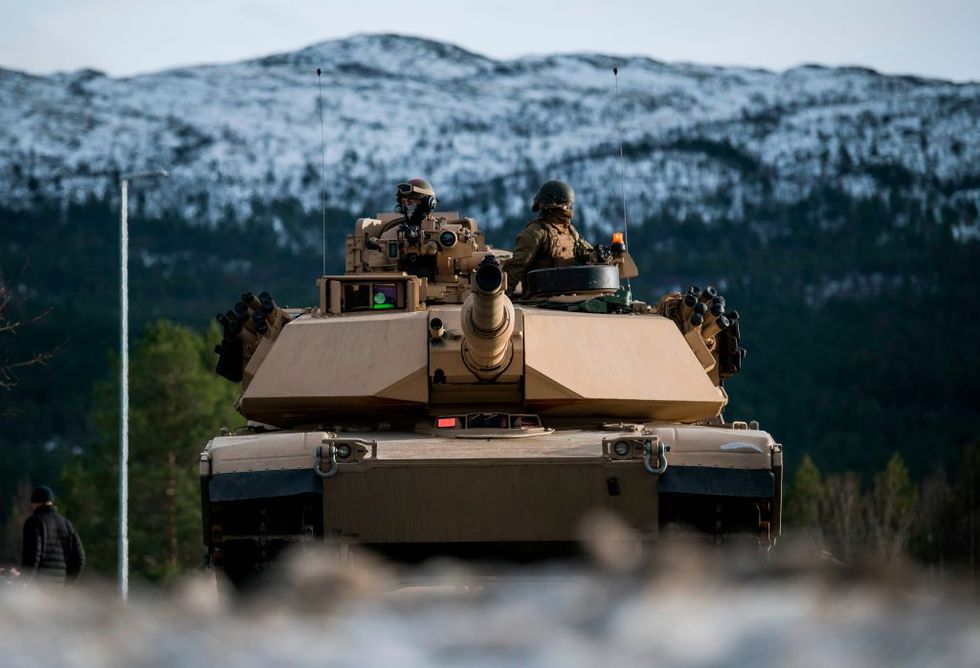
U.S. Marines drive an M1 Abrams to take part in an exercise to capture an airfield as part of the Trident Juncture 2018, a NATO-led military exercise, on November 1, 2018 near the town of Oppdal, Norway.
Getty Images
However, in an article published on September 26, Moscow’s Sputnik News exaggerates not only the threat to Abrams tanks, but the tank’s vulnerabilities. Specifically, it lays out how troops of the Russian Ground Forces will defeat the 31 M1A1 Abrams tanks the United States finally transferred to Ukraine last week, using everything from anti-tank mines to machine guns.
To be clear, the Abrams is not perfect—but it’s not invulnerable either. At the same time, Sputnik News is an arm of Russian state propaganda, meaning it frequently parrots the Kremlin’s position, which is often misaligned with objective reality.
As always, the truth lies somewhere in the middle. So, let’s address the Russian state media’s assertions about the M1A1 Abrams’ weaknesses, point by point.
How to Kill an M1A1 Abrams Tank, According to Russia
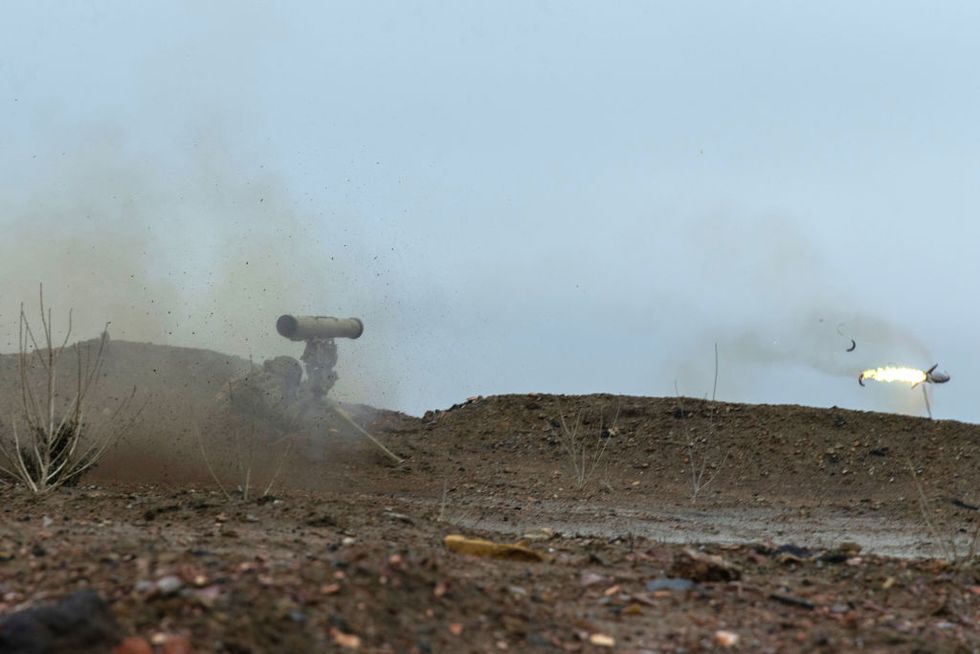
Soldiers of a Ukrainian assault regiment unit fire a Kornet anti-tank missile at a fortified position in the Russian trenches facing them on November 28, 2022 in the Donetsk region of Donbas, Ukraine.
Getty Images
Russian forces could use various types of anti-tank weapons to defeat Ukraine’s host of M1A1 Abrams tanks, Sputnik News claims: anti-tank mines, air and artillery forces, attack helicopters, Russian tanks, and anti-tank missiles. Let’s run through each match-up.
1️⃣ Anti-Tank Mines
Russia has laid thousands, if not tens of thousands, of TM62 anti-tank mines, making these the most plausible anti-tank weapons for destroying the M1A1 Abrams. Any tank or other armored vehicle that rolls over one of these mines will trigger its 16.5-pound TNT charge. This is not a strong enough blast to penetrate the M1A1 Abrams’ belly armor, but it would damage the tank’s tracks, immobilizing it in enemy territory. To help deal with stranded tanks, the U.S. government is also sending Ukraine eight M88 Hercules armored recovery vehicles capable of hauling the 67.5-ton tank from the battlefield.
2️⃣ Air and Artillery Forces
Russia does have a lot of heavy artillery, and it no doubt poses a threat. Although 152-millimeter artillery shells could likely destroy an Abrams, it would require a direct hit, which is difficult to achieve (and mostly relies on luck) with an unguided, indirect-fire weapon. The Abrams tank is highly mobile with good cross-country capability, and as long as the tanks keep moving—even a little bit—they should leave Russian artillery in the dust.
3️⃣ Attack Helicopters

A Ka-52 “Alligator” attack helicopter, shown here, has a reasonable range advantage over the Abrams tank, allowing it to shoot anti-tank missiles at ranges exceeding the M1A1’s ability to return fire. But Ka-52 helicopters have proven vulnerable to enemy fire, taking nearly 50 percent casualties in the war.
Getty Images
The Sputnik News article also mentions Mi-28 and Ka-52 attack helicopters as “hunting Ukrainian tanks” with stand-off missiles, but cites no data on how many enemy tanks Russian helicopters have actually destroyed. The anti-tank missiles, according to the Russian state media outlet, “often make it impossible for Ukraine’s air defenses to respond.”
On the other hand, we know that Ukraine’s allegedly powerless air defenses have caused serious losses in both types of helicopters, with at least 12 of 98 Mi-28 attack helicopters and 44 of 114 Ka-52s lost.
4️⃣ Russian Tanks
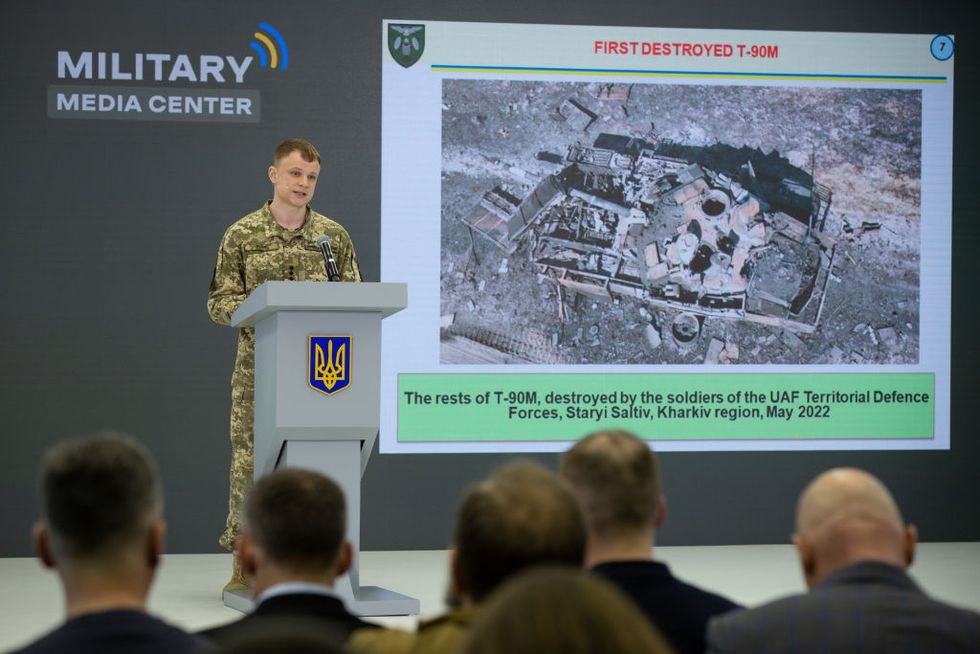
The Russian T-90M tank shown here is one of the few weapons that can more than likely seriously hurt an Abrams tank.
Getty Images
Most of Russia’s frontline tanks have some variant of the 2A46M 125-millimeter main gun, with the new T-90M using a variant allegedly more accurate and with greater range. It’s possible a 2A46M gun could penetrate the frontal turret armor of an M1A1 Abrams; although classified, one estimate for the frontal arc of the M1A1’s turret armor is the equivalent of 600 millimeters of rolled homogeneous steel armor (RHA), while the Svinets-1 depleted uranium tank round can reportedly penetrate 700-millimeter RHA.
So, it may be possible that a Russian tank could destroy an Abrams tank; these are only estimates, however, and may be off in either direction by a considerable margin. Having said that, tank-on-tank combat in Ukraine is rare, with the Wall Street Journal reporting less than 5 percent of tanks destroyed in the conflict were destroyed by other tanks. There’s also a question of how many of these advanced and expensive depleted uranium rounds are available after 18 months of war.
5️⃣ Anti-Tank Missiles
Finally, Sputnik News mentions Russian anti-tank missiles such as the ground-launched Kornet, air-launched Ataka, Sturm, and Vikh, among others; this is a potential problem. The M1A1’s armor is estimated to provide between 900-millimeter and 1,300-millimeter M1A1 RHA protection against high-explosive, anti-tank (HEAT) rounds. The low number is for your average M1A1, but the higher number is for tanks equipped with depleted uranium armor. We don’t know which version the Ukrainians are getting. Rosoboronexport, the Russian state company that manufactures Kornet, lists the missile as capable of penetrating between 1,000 to 1,300-millimeter RHA.
General Weaknesses of the M1A1 Abrams Tank, According to Russia
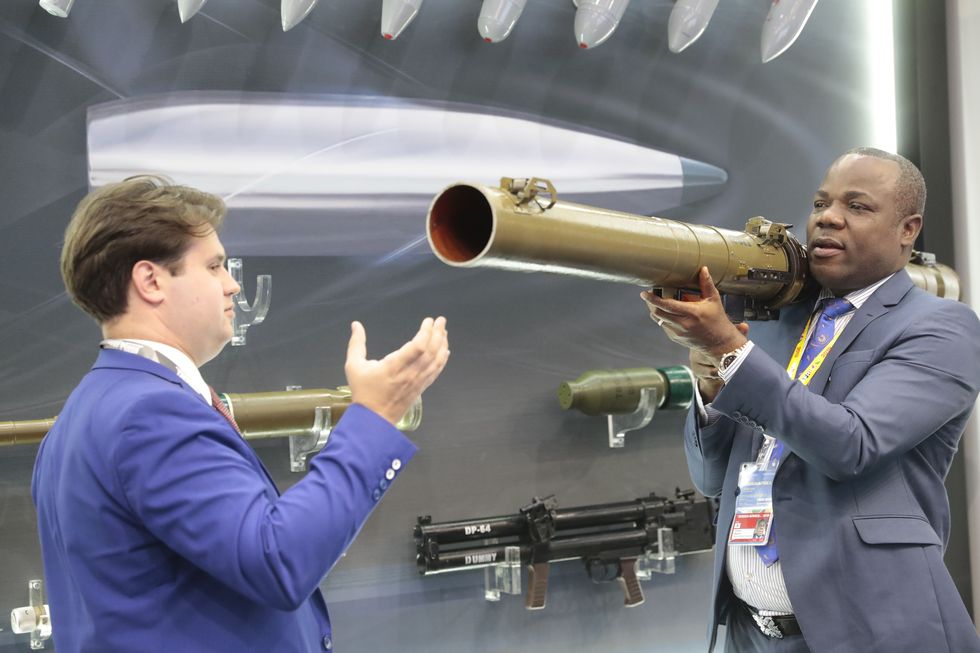
An RPG-29 rocket launcher, such as this one shown at a Russian arms show, reportedly disabled an Abrams tank in 2007, but it was likely a very lucky hit.
Getty Images
The rest of the Sputnik News article is devoted to identifying alleged weaknesses in the Abrams. Let’s tackle the most plausible weaknesses first.
- The Abrams’s turret roof armor is not particularly great, leaving it vulnerable to weapons that fire a penetrator through the top of the tank.
- It’s also true that Ukraine’s M-1s might not be equipped with depleted uranium armor. However, Russian tanks also lack these protections, so the Abrams is not uniquely weak by a long shot.
Other alleged weaknesses are plausible, but need qualifiers.
- The Abrams tank is vulnerable to certain infantry anti-tank weapons. The older RPG-7 anti-tank grenade launcher won’t penetrate an Abrams’ thick armored hide, but the newer PG-29V claimed at least one tank in 2007. In most cases involving infantry weapons that disabled Abrams tanks, the shot was a very lucky one taken against the side of the tank where it was more vulnerable. These shots are more frequent in guerrilla conflicts like the Iraqi insurgency, in which the enemy might attack from all directions. In the Ukraine War, with its clear, definable front lines, it will be easier to keep Russian troops in the frontal arc of the tank where its armor is strongest.
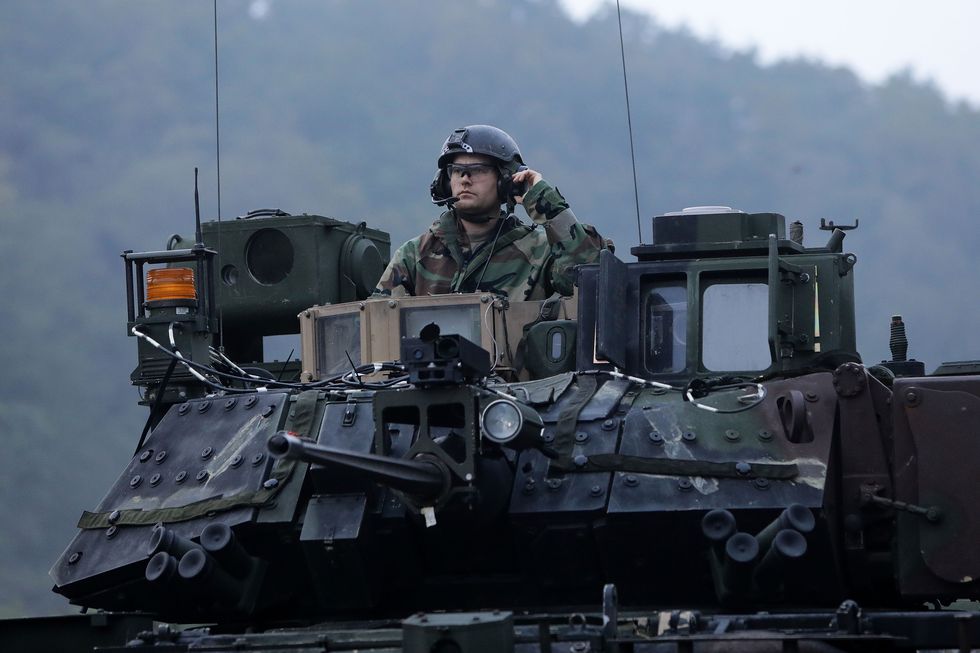
Sputnik’s military expert has not adequately explained how the 25-millimeter M242 Bushmaster chain gun on an M2 Bradley, shown here, supposedly destroyed an Abrams tank.
Getty Images
Still other allegations are likely untrue (or are irrelevant at best).
- Sputnik’s “expert”—Sergey Suvorov, a retired Russian army colonel with special knowledge of armor—claims that sandstorms will disable Abrams tanks. True or not, there are no sandstorms in Ukraine.
- Suvorov’s concerns about a ricochet from the tank’s front hull glacis into the turret are overstated.
- He claims that a 12.7-millimeter DShK machine gun, the main Russian heavy machine gun caliber, will destroy an Abrams; this is likely only partially true, as the machine gun tracers reportedly ignited a fire that disabled the tank. (A survey of Abrams tanks destroyed in the 2000s suggests that most are either destroyed by fires or large and powerful improvised explosive devices buried in roads.
- Most incredibly, Suvorov also claims that the light-caliber cannons and the obsolete Russian 100-millimeter gun have all disabled Abrams tanks. There is no publicly available evidence to back up the assertion that any of this actually happened—even once.
The Takeaway
Suvorov seems to be setting up the Russian people, and readers abroad, to believe that Russian troops can perform heroic miracles to destroy Ukrainian Abrams tanks. In his world, Russian troops will quickly turn Abrams tanks into funeral pyres—just like the World War-II comic book hero Sgt. Rock singlehandedly destroyed a Panzer V Tiger tank with a bazooka.
But there are rarely miracles in war, and Russian soldiers will have to work very hard to kill an Abrams tank.












